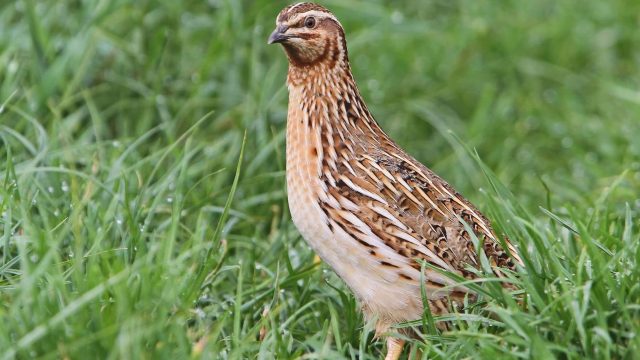The little birds always seem harmlessbut the reality is that many times they are not. In fact, we are so accustomed to seeing quail, that nor do we look at this invasive species.
However, Japanese quailscientifically known as Coturnix japonicaIt is not a exotic variety more. The reality is that it comes from Oriental Asia and The Ministry for Ecological Transition and Demographic Challenge (Miteco) It has had to point it out as an invasive species.
The reasons for making this decision have been clear: its introduction for hunting purposes has caused the common quail to be totally displaced.
This bird looks like a common quail, but it is an invasive species
As Miteco has reported on his file on invasive species, the problem of Japanese quail is that It was introduced uncontrollably in Spain, for use in hunting.
The goal was to train dogs and include it in the hunting world. However, It was not taken into account how it could affect native species such as common quailwhose scientific name is Coturnix coturnix.
This exotic quail competes for the same resources, takes away space in its natural habitat and, most worrying, there has come to cases of hybridization between species.
Why is it dangerous for this invasive species to mix with quail?
It may seem a mere anecdote that Japanese quail mixes with common quail. However, In the medium and long term it can cause the loss of an native species.
This hybridization causes genetic purity to be lost, which could endanger the biological identity of common quail, but that is not the only inconvenience.
Besides, The result of this mixture is morphologically almost indistinguishable from common quail. That is, it makes detection difficult and complicates conservation tasks.
Japanese quail has been able to adapt perfectly to the conditions of Spain, since it lives comfortably in open habitats as agricultural areas, mountain slopes or meadows.
On the other hand, it has facilities for survival, since it enjoys a varied diet based on seeds, larvae, insects and other small invertebrate animals.
These eating habits make it a very competitive bird in front of other local species with similar routines.
How to distinguish Japanese quail from a common
More or less, we would all know how to distinguish a quail with a simple glance: chocking, brown with mottled plumage … but would we know how to differentiate a common quail from a from Asia?
The reality is that differences are practically imperceptible. For example, They suffer small variations in the color of the plumage, the tone of the peak and the one with the legs.
Even so, not even the most quail expert could distinguish a European quail from a hybrid. The absence of differentiable features could make your control almost impossible.
For all this, and although it seems a good idea to use it for hunting and canine training, it is vital that the number of Japanese quail stops growing in Spain. If not, the result can be the disappearance of an native species.




